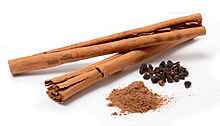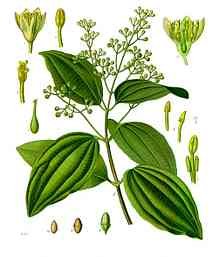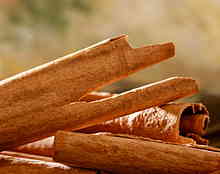Cinnamon History

Cinnamon has been known from remote artifact. It was foreign made to Egypt as right on time as 2000 BC, however the individuals who report that it had originated from China mistake it for cassia.[3] Cinnamon was so very prized among antiquated countries that it was viewed as a blessing fit for rulers and notwithstanding for a god; a fine engraving records the endowment of cinnamon and cassia to the sanctuary of Apollo at Miletus.[7] Although its source was kept puzzling in the Mediterranean world for a considerable length of time by those in the zest exchange to ensure their restraining infrastructure as providers, cinnamon is local to India, Sri Lanka, Bangladesh, and Myanmar.[8]

The principal Greek reference to kasia is found in a sonnet by Sappho in the seventh century BC. As indicated by Herodotus, both cinnamon and cassia developed in Arabia, together with incense, myrrh, and labdanum, and were protected by winged serpents.[citation needed]
In Ancient Egypt, cinnamon was utilized to treat mummies.[9] From Hellenistic circumstances forward, Ancient Egyptian formulas for kyphi, a fragrant utilized for consuming, included cinnamon and cassia. The endowments of Hellenistic rulers to sanctuaries here and there included cassia and cinnamon.
Cinnamon was brought around the Arabian promontory on "pontoons without rudders or sails or paddles", exploiting the winter exchange winds.[10] Pliny the Elder additionally says cassia as an enhancing operator for wine.[11]
As indicated by Pliny the Elder, a Roman pound (327 grams (11.5 oz)) of cassia, cinnamon, or serichatum cost up to 1500 denarii, the wage of fifty months' labour.[12] Diocletian's Edict on Maximum Prices[13] from 301 AD gives a cost of 125 denarii for a pound of cassia, while a horticultural worker earned 25 denarii every day. Cinnamon was excessively costly, making it impossible to be generally utilized on memorial service fires in Rome, yet the Emperor Nero is said to have consumed a year of the city's supply at the burial service for his significant other Poppaea Sabina in AD 65.[14]

Malabathrum leaves (folia) were utilized as a part of cooking and for refining an oil utilized as a part of a caraway sauce for clams by the Roman gourmet, Gaius Gavius Apicius.[15] Malabathrum is among the flavors that, as indicated by Apicius, any great kitchen ought to contain.
Center Ages Edit
Through the Middle Ages, the wellspring of cinnamon remained a secret toward the Western world. From perusing Latin essayists who cited Herodotus, Europeans had discovered that cinnamon came up the Red Sea to the exchanging ports of Egypt, yet where it originated from was not as much as clear. At the point when the Sieur de Joinville went with his lord to Egypt on campaign in 1248, he announced – and accepted – what he had been told: that cinnamon was angled up in nets at the wellspring of the Nile out at the edge of the world (i.e., Ethiopia). Marco Polo maintained a strategic distance from accuracy on the topic.[16] Herodotus and different creators named Arabia as the wellspring of cinnamon: they related that monster "cinnamon winged animals" gathered the cinnamon sticks from an obscure land where the cinnamon trees developed and utilized them to build their homes, and that the Arabs utilized a trap to acquire the sticks. Pliny the Elder wrote in the main century that brokers had made this up to charge all the more, however the story stayed current in Byzantium as late as 1310.
The principal specify that the flavor developed in Sri Lanka was in Zakariya al-Qazwini's Athar al-bilad wa-akhbar al-'ibad ("Monument of Places and History of God's Bondsmen") around 1270.[17] This was taken after presently by John of Montecorvino in a letter of around 1292.[18]
Indonesian pontoons transported cinnamon straightforwardly from the Moluccas to East Africa (see additionally Rhapta), where neighborhood merchants at that point conveyed it north to Alexandria in Egypt.[19][
Cinnamon is very tasty and well-balanced and has many properties. Especially in tea
r8
Congratulations @urmilasraboni15! You received a personal award!
Click here to view your Board
Do not miss the last post from @steemitboard:
Vote for @Steemitboard as a witness and get one more award and increased upvotes!
Congratulations @urmilasraboni15! You received a personal award!
You can view your badges on your Steem Board and compare to others on the Steem Ranking
Do not miss the last post from @steemitboard:
Vote for @Steemitboard as a witness to get one more award and increased upvotes!